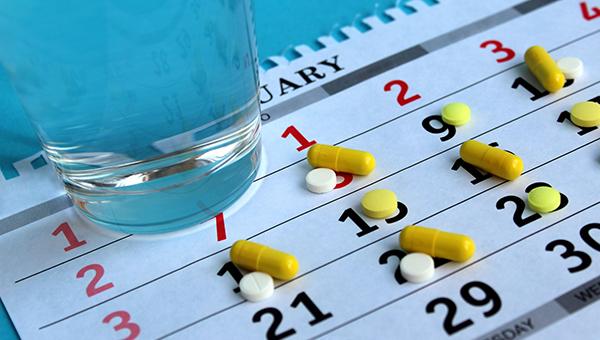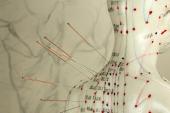Optimal Medical Therapy for Stable Angina: Which Drugs? How Long?
While 3-6 months is a reasonable duration to see if symptoms improve, others contend patient preference matters most.

What exactly is optimal medical therapy (OMT) for angina relief? And how long should doctors prescribe it before proceeding to an invasive approach in symptomatic patients with stable ischemic heart disease?
Those are the questions posed by several clinical investigators in a viewpoint, recently published in the Lancet, challenging the cardiology community to better define OMT for symptom relief, including what constitutes a sufficient intensity and duration of antianginal therapy, before shipping patients with angina to the cath lab.
“What's really not clear in the context of using antianginal therapy as part of OMT for symptom relief and quality-of-life improvement is just when do you acknowledge that somebody has failed an adequate empirical trial of pharmacologic therapy, and when should you refer the patient onto revascularization,” lead author William E. Boden, MD (Boston University School of Medicine/VA New England Healthcare System, MA), told TCTMD.
Boden stressed there is no one-size-fits-all approach for patients—and their recommendations aren’t written in stone—but the viewpoint, which was co-authored by Juan Carlos Kaski, MD (St George’s University of London, England), Rasha Al-Lamee, MD (Imperial College London, England), and William Weintraub, MD (Georgetown University School of Medicine/MedStar Health Research Institute, Washington, DC), suggests an initial course of OMT lasting 3 to 6 months in all but the most-symptomatic patients would be considered appropriate before declaring it a failure.
“And to be fair, I think it's going to vary depending on other issues, such as the functional status of the patient, the age of the patient, or how physically fit or sedentary they might be,” said Boden.
In the setting of stable ischemic heart disease, multiple randomized clinical trials, most notably COURAGE and ISCHEMIA, have demonstrated that the addition of coronary revascularization on top of OMT does not further lower the risk of hard clinical outcomes, such as MI and mortality. In ISCHEMIA, though, OMT was better when it came to relieving angina symptoms, specifically among patients with daily or weekly angina at baseline. The trial also showed there was no significant risk of sudden cardiac death in the conservatively managed patients, which suggests that physicians have plenty of time to optimize medical therapy for angina relief before giving up and moving to PCI or CABG surgery, according to the experts.
Even the ISCHEMIA trial leadership, Boden pointed out, have emphasized there is no need to rush into the catheterization laboratory with stable CAD patients.
Sripal Bangalore, MD (NYU Langone Health, New York), who led the ISCHEMIA-CKD study of patients with advanced kidney disease, said the approach proposed by the researchers is very reasonable, but added that the duration of trying OMT before revascularization needs to be customized for each patient.
“It really needs to be patient-centric,” Bangalore told TCTMD. “There are patients who don’t want to wait 3 or 6 months. There are patients, where even up front they feel it’s hindering their quality of life. I’ve treated avid cyclists who don’t want to feel anything. In those cases, waiting 3 or 6 months sounds reasonable, but it needs to be tailored to the individual patient and their preferences.”
Similarly, Ajay Kirtane, MD (NewYork-Presbyterian/Columbia University Irving Medical Center, NY), emphasized individualized care, noting that the treatment of angina symptoms comes down to a discussion between patients, their families, and their physician. To TCTMD, Kirtane said that physicians don’t have an obligation to try OMT first necessarily, but instead to present the risks and benefits of both treatment options in a dispassionate manner.
“The conversations can be really thoughtful, sophisticated, and you can really understand what the patient wants and what they don’t want,” he said.
While patients may intuitively want to “fix” a coronary blockage, which would lead them down the road to PCI, physicians do have a responsibility to tell them that revascularization won’t save their life, said Kirtane. However, he pushed back against the claim that PCI doesn’t reduce the risk of MI, pointing to data from ISCHEMIA showing that MI curves crossed around 2 years and that PCI was associated with fewer late spontaneous events.
“There’s clearly an up-front risk associated with it, and that risk needs to be communicated, but there is a late benefit,” he said. “It’s a much more nuanced discussion than it was before ISCHEMIA.”
Being Fair With OMT
In the viewpoint, Boden and colleagues focus on how to best define OMT and its duration before moving on to coronary revascularization, acknowledging that question has never been adequately addressed in the various randomized trials. Boden said he worries some operators and/or patients may not give OMT a sufficient time to work.
“What if you have a patient who’s been on atenolol 25 mg and isosorbide 30 mg for 2 or 3 weeks but who is still symptomatic?” asked Boden hypothetically. “Is that a sufficient trial of antianginal therapy? Some of the interventionalists might say yes—anybody that has any recurrent angina should be targeted for revascularization. But that’s not fair—you have to give medical therapy a chance to work. Why wouldn’t we try to provide some temporal boundaries, something reasonable, something that there’s at least some evidence to support it.”
There is also evidence that use of OMT is underutilized in patients with stable angina, including a 2020 study showing that only one-third of patients with stable angina were taking guideline-recommended therapies, including beta-blockers.
In terms of their recommendations, Boden, Kaski, Al-Lamee, and Weintraub encourage patients with chest discomfort of ischemic origin to undergo CT coronary angiography to exclude left main or extensive three-vessel CAD. Additionally, echocardiography might be needed to identify subgroups with severe left ventricular impairment where OMT alone might not be appropriate and patients might be better served with a surgical approach.
For all other patients, antianginal therapy with beta-blockers, calcium antagonists, and nitrates (at least two of these three drug classes) should be started. To achieve optimal therapy, dosages should be uptitrated at intervals of 1 to 2 months. Additionally, as the guidelines and consensus statements make clear, physicians should adopt an algorithmic approach to treatment that takes into account patient comorbidities, ventricular function, heart rate, and blood pressure to guide drug selection. Moreover, patients should be checked periodically—ideally every month—to see how they’re responding to treatment.
Bangalore pointed out that medication compliance can be a very difficult issue, highlighting the ORBITA trial as an example. In that study, which compared the effectiveness of PCI versus medical therapy for symptom relief in a sham-controlled setting, researchers consulted weekly with patients to make sure OMT was optimized. If centers have those types of resources to aggressively optimize OMT, then a trial duration of 3 to 6 months is a good length of time to see if it works, suggested Bangalore.
Kirtane agreed, noting that the frequency of follow-up necessary to optimize OMT can be demanding in routine clinical practice, though that doesn’t mean physicians shouldn’t try. The approach advocated by Boden and colleagues is entirely reasonable, if aspirational, but it ultimately will come down to a discussion with the patient and whether they’re interested in going that path.
“But again, at the end of the day, it’s what the patient wants,” said Bangalore. “It’s their quality of life and how they feel about their symptoms.”
The ISCHEMIA investigators are currently working on an analysis evaluating clinical outcomes based on patient adherence to OMT, and that publication should be available in the coming months, added Bangalore.
Guided by Ischemia Mechanism
Boden also stressed that treatment should be guided by the underlying mechanism of ischemia, if possible. For example, if angina is largely exertional in origin and blood pressure is normal or elevated, use of beta-blockers, calcium channel blockers, or nitrates is appropriate. If blood pressure is less than 100-110 mm Hg, or heart rate lower than 60 beats per minutes, use of other drugs, such as ranolazine, ivabradine, trimetazidine, or nicorandil, might be better options.
“We're always trying to get our fellows and our residents to understand that you have to pay attention to parameters like heart rate and blood pressure and that you should try to tailor the treatment to the underlying cause and precipitants of ischemia,” Boden told TCTMD. “For example, if somebody has vasospasm, or if I think vasospasm is a likely component of their symptoms, then I will often not use a beta-blocker. Instead, I'll use a heart rate-lowering calcium channel blocker. This approach will give patients some coronary vasodilatation, some protection against coronary spasm, and also some heart rate reduction.”
The point, he stressed, is that physicians have options and need to think critically about numerous factors playing into decisions around OMT. Before adding any new drug, Boden said physicians should try to optimize the doses of their current regimen, in the hopes of avoiding another medication in patients who are likely taking multiple drugs for different conditions.
To TCTMD, Boden acknowledged that none of the randomized, controlled trials were designed to prospectively assess the ideal duration of antianginal therapy before calling it off. In ISCHEMIA, the duration of OMT was left to the discretion of the treating physician, as it was in COURAGE and BARI-2D. Nonetheless, Boden and colleagues say they still need to provide doctors with some practical guidance on how best to employ OMT for symptom control in the nonacute, nonurgent clinical setting.
Kirtane pointed out that OMT can be challenging for some patients, particularly younger, more active ones who are adversely affected by side effects, specifically beta-blockers. After PCI, Kirtane will stop the beta-blocker, and such patients are as appreciative for alleviating their fatigue as they are for eliminating their angina. He also pointed out that patients with stable angina, to control their symptoms, learn to limit what they can and can’t do.
“If we’re talking about a lifetime of [more-limited] healthy activity, that’s not in the best interest of patients,” he said. “An elderly patient who limits their activity may have less angina, but what is their overall health like if they’re just sort of winding down as opposed to doing as many or more activities as they did before?”
For that reason, Kirtane said that if a patient is started on OMT, they should be sent for cardiac rehabilitation to be sure that they’re doing as much physical activity as they can and should be doing.
Michael O’Riordan is the Managing Editor for TCTMD. He completed his undergraduate degrees at Queen’s University in Kingston, ON, and…
Read Full BioSources
Boden WE, Kaski JC, Al-Lamee, Weintraub WS. What constitutes an appropriate empirical trial of antianginal therapy in patients with stable angina before referral for revascularization. Lancet. 2021;Epub ahead of print.
Disclosures
- Authors report no conflicts of interest.
- Kirtane reports institutional funding to Columbia University and/or Cardiovascular Research Foundation from Medtronic, Boston Scientific, Abbott Vascular, Amgen, CSI, Philips, ReCor Medical, Neurotronic, Biotronik, Chiesi, and Bolt Medical. In addition to research grants, institutional funding includes fees paid to Columbia University and/or Cardiovascular Research Foundation for consulting and/or speaking engagements in which he controlled the content. He reports consulting fees from IMDS, travel expenses/meals from Medtronic, Boston Scientific, Abbott Vascular, CSI, Siemens, Philips, ReCor Medical, Chiesi, OpSens, Zoll, and Regeneron.
- Bangalore reports grant/research support from Abbott Vascular and consulting fees/honoraria/speakers bureau fees from Abbott Vascular and Biotronik.





Comments